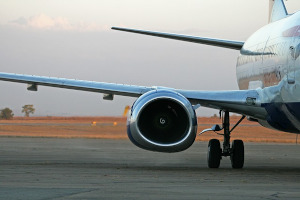The Boeing 737 MAX case: chronology of events and cost of the incident
 The investigation soon revealed a malfunction of the piloting instruments, referring in particular to an incidence sensor, which displayed erroneous values. To override and correct the system, and prevent the device from stalling, the pilot tried to gain altitude, but the software of the flight control system MCAS (Maneuvering Characteristics Augmentation System) failed, eventually causing the plane to lose control and crash.
The investigation soon revealed a malfunction of the piloting instruments, referring in particular to an incidence sensor, which displayed erroneous values. To override and correct the system, and prevent the device from stalling, the pilot tried to gain altitude, but the software of the flight control system MCAS (Maneuvering Characteristics Augmentation System) failed, eventually causing the plane to lose control and crash.
Five months after this event, on 10 March 2019, another 737 MAX 8 suffered the same fate. The plane, which was operating Flight 302 from Addis Ababa to Nairobi for Ethiopian Airlines, crashed to the ground six minutes after takeoff. The new disaster resulted in the death of 157 people, including 149 passengers and 8 crew members.
Between 11 and 13 March 2019, several countries and airlines struck by the similarity of the two accidents decided to suspend the totality of flights made by Boeing 737 MAX.
On 19 March 2019, the U.S. Department of Transportation (DOT) decided to carry out an audit of the 737 MAX 8 certification process granted to the manufacturer in March 2017.
In the wake of the DOT, the U.S. Congress also initiated investigations into the certification process. For its part, the FBI opened a criminal investigation into the certification.
As a result, all 387 Boeing 737 MAX aircrafts in service were grounded for nearly two years, leading to multiple flight cancellations.
As of mid-March 2019, the order backlog for the 737 MAX, the U.S. aircraft manufacturer's flagship aircraft, stood at 4 636 units for an estimated value of 600 billion USD. For the record, the 737 MAX typically accounts for one-third of Boeing's sales. No aircraft was delivered to airlines during the flight suspension period.
On 21 March 2019, the aircraft manufacturer announced that the warning light indicating a malfunction of the MCAS system so far offered as a paid option will henceforth be installed on all Boeing 737 MAX aircrafts.
Read also | The crisis of Boeing 737 MAX
Boeing’s insurers
 The events that caused the loss of the Lion Air and Ethiopian Airlines aircraft are covered by the Boeing manufacturer's policy, managed by Global Aerospace and brokered by Marsh McLennan.
The events that caused the loss of the Lion Air and Ethiopian Airlines aircraft are covered by the Boeing manufacturer's policy, managed by Global Aerospace and brokered by Marsh McLennan.
Given the magnitude of the risk, the leaders of the policy, insurers and reinsurers combined, including Allianz, AXA, Swiss Re, Hannover Re, Munich Re and SCOR, were heavily involved in the loss.
Equally involved in the risk were PartnerRe, Liberty Specialty Markets, Lancashire, Cathedral, the Atrium Consortium and Tokio Marine & Nichido Fire.
May 2019, British reinsurance broker Willis Re came up with an initial loss estimate of 1 billion USD.
Second quarter of 2019, the aircraft manufacturer reported a record quarterly loss of 2.9 billion USD, and a provision for airline compensation of 4.9 billion USD. For the record, the quarterly fleet downtime cost is estimated at 4 billion USD.
July 2019, Boeing announced the creation of a reserve worth 100 million USD designed to provide assistance to the victims' families.
September 2019, reinsurers estimated the insured losses to amount to 837 million USD for the whole aviation market. For its part, Ethiopian Airlines reported a 130 million USD loss to the aircraft's body.
Boeing estimated the compensation designed for the families of the victims of the Lion Air and Ethiopian Airlines flights at 330 million USD.
January 2020, Boeing estimated losses from the 737 MAX crisis at 19 billion USD. This amount includes the immobilization of the aircraft, the compensation of the airlines, the industrial losses (cancellation of orders, postponement of purchases, stoppage of the production lines...), the losses of image and customer trust, as well as various penalties.
At this date, the aircraft manufacturer has reported 183 order cancellations. The compensation of the airlines alone was estimated at 9 billion USD.
November 2020, the Federal Aviation Administration granted a new certification to the Boeing 737 MAX, which has undergone major modifications, including the MCAS. The flight ban was then lifted.
At this date, Boeing's order book has sustained 448 cancellations and 782 uncertain orders.
On 9 December 2020, the Brazilian company Gol authorized the first commercial flight of the corrected version of the Boeing 737 MAX, 20 months and 15 days after its suspension.
January 2021, Boeing pleaded guilty to fraudulent conduct, a move designed to end the U.S. government's prosecution of the case.
Accordingly, the company agreed to pay a penalty of 2.5 billion USD, including a fine of 243.6 million USD to be paid to the US government, 500 million USD to be paid to the compensation fund for the victims’ families, and finally 1.77 billion USD for the compensation of part of the sums due to the airlines.
Boeing 737 MAX: the current situation
 With an estimated amount of 3 billion USD for the insurance part of the case, that is, the losses of the two Boeing 737 MAX aircrafts, Boeing's claim to its insurers exceeds the 2.5 billion USD spent after the 11 September 2001 attacks against the twin towers of the World Trade Center in New York.
With an estimated amount of 3 billion USD for the insurance part of the case, that is, the losses of the two Boeing 737 MAX aircrafts, Boeing's claim to its insurers exceeds the 2.5 billion USD spent after the 11 September 2001 attacks against the twin towers of the World Trade Center in New York.
The bill includes the damages linked to the Ethiopian Airlines accident which went from 990 million USD to 2.25 billion USD, plus 500 million USD for the losses linked to the interruption of operations of the defective aircrafts.
Although the costs of the Lion Air disaster remain unknown to this day, they are still estimated at hundreds of millions of dollars which would be added to these amounts.
Along with the 27 March, 1977 Tenerife 747 collision, the 737 MAX disaster is considered one of the most expensive accidental events in aviation history.
